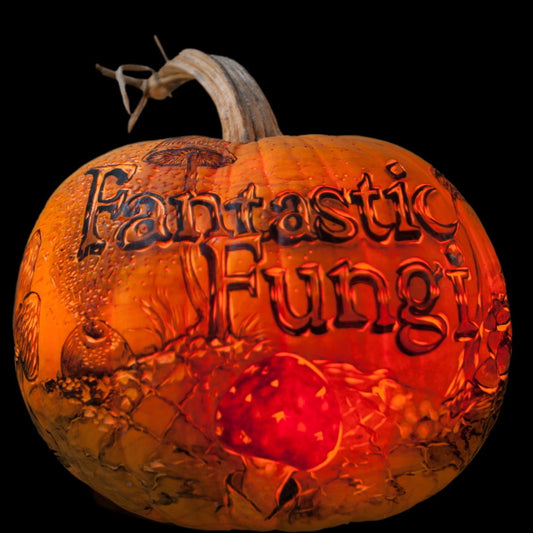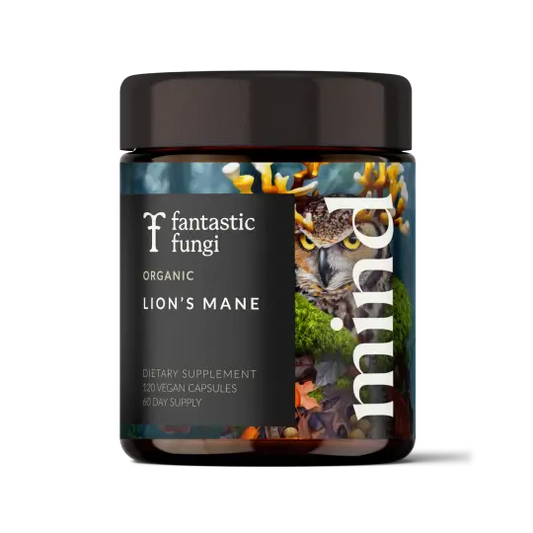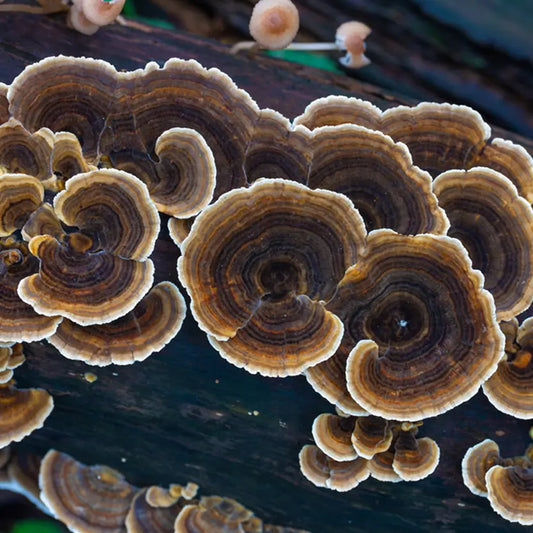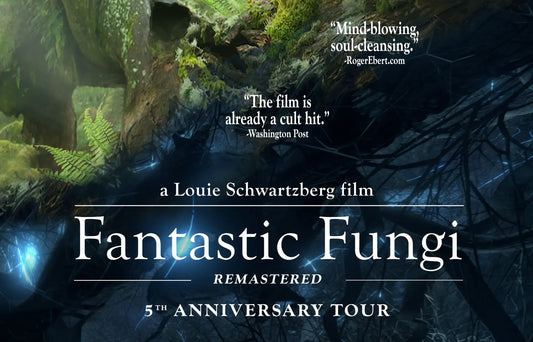
Just in Time for Halloween, 5 Fun and Freaky Facts about Mushrooms
We take fungi seriously, and we’re in awe of the magic and mystery of mushrooms. Whether to support our health, clean up our planet or nourish our bodies, mushrooms and fungi are, well, fantastic. But as Halloween draws close, we wanted to have a little more fun. We’re diving into the folklore behind mushrooms, looking into some of the freakiest facts about them – and even sharing some festive Halloween-themed mushroom recipes!
Trick or treat? Chanterelles or jack-o-lanterns?
As the saying goes: “There are old mushroom hunters/and bold mushroom hunters/but no old, bold mushroom hunters.” Whether you are a novice or a seasoned forager, you must be 100% certain about the identity of every mushroom you intend to consume.
One common mistake newbies make is confusing delicious chanterelles with jack-o-lanterns, which cause severe GI distress if consumed. While they are both orange, chanterelles lean toward the more muted, yellow side of the color wheel. Plus, they have false gills (wrinkles along the stem) and a cap that can’t be detached from the stem without tearing it. They are solitary mushrooms – or sometimes found in small clusters – while jack-o-lanterns form large clusters often at the base of tree stumps. Learn the difference.
Why your Cordyceps aren’t “zombie mushrooms”
The original Cordyceps mushrooms – the ones relegated to only the emperors of ancient China and their families – were found in nature and feasted on a specific kind of caterpillar. Those mushrooms are Cordyceps sinensis, which still grows wild in Nepal and Tibet. The cultivated versions used in the Cordyceps products that our partners make use a cruelty-free, vegan species. Cordyceps militaris offers the same support as C. sinensis, but it is cultivated on plants (usually grains)!
But there is a zombie fly fungus out there!
Mushrooms are to be respected – not feared – unless you happen to be a house fly! There’s a fungus called Entomophthora muscae that turns female house flies into zombies who emit chemicals that entice male house flies to commit necrophilia. And, creepily enough, the longer the corpses have been dead, the more appealing they are to the males. Eek! Let this be a reminder of the power of nature.
Are “fairy rings” truly magical?
Fairy rings are simply rings of mushrooms that sprout up. Since mushrooms “grow” right under our noses – but mostly without us noticing until they have fully formed – these rings seemed magical to our ancestors. One popular belief about fairy rings was that stepping inside them left someone vulnerable to the power of the fairies. Most mentions are benign, but fairy rings are called “Hexen Rings” (Witches Rings) in German! (This academic article is chock full of mushroom folklore and historical mentions!)
Mushrooms have long inspired creativity and connection!
Back in 2021, we wrote about the mushroom folklore of Ireland. Ancient Irish cultures believed in using mushrooms in religious ceremonies, to commune with the universe and to pass along wisdom. Mushrooms may even have been used in mead, the fermented beverage made with honey.
Our Favorite Ways to Savor Mushrooms on Halloween
You’re never too old to believe in a little mystery and magic, and Halloween is the perfect time to embrace a beginner’s mind and a sense of wonder. Whether you’re taking little ones trick-or-treating or hosting a costume bash for the grown-ups, these recipes and serving suggestions are a fun way to integrate mushrooms into Halloween.
-
Mushroom chocolate is a favorite treat for grown-ups, whether you savor a square of Reishi or Cordyceps & Lion’s Mane chocolate after dinner or warm up with a mug of cocoa. Hot chocolate is such a comforting way to enjoy mushrooms!
-
A serving of mushroom gummies tastes like a treat (with a boost for your health, too).
-
If you prefer to make your own candy, try adding your favorite Mushroom Elixirs to truffles, peanut butter cups or fudge.
- On the savory side, how about turning mushrooms into eyeballs (really just a cleverly presented stuffed mushroom) or skulls?
If you’re integrating mushrooms into your Halloween parties and rituals this year, share photos on social media – and be sure to tag us!









